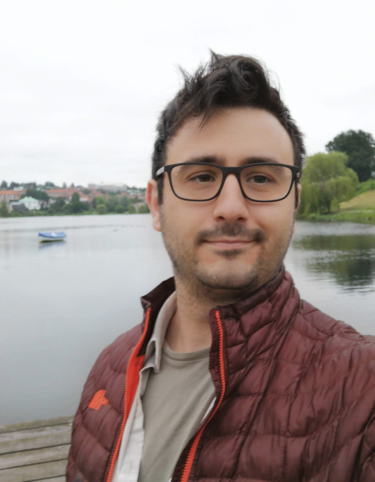On the role of microstructural variability in pultrusion
Onur Yuksel is a PhD student in the department Production Technology and Engineering.Promotors are prof.dr.ir. R. Akkerman and dr. I. Baran from the Faculty Technology and Engineering.
 Pultrusion is a continuous manufacturing method to produce composite parts with constant cross sectional shape. This thesis focuses on advancing this manufacturing method by investigating the role of microstructural variability in pultrusion. The principal objective is to develop efficient numerical and experimental tools to improve the product quality of pultruded parts, taking meso/microstructural variability into account. To fulfill this objective, various numerical and experimental tools, which vary from material characterization to numerical process models and experimental validation techniques, were developed.Firstly, the focus is on understanding the behavior of pultrusion specific resin systems through the development of thermo-chemical mechanical material models. These models provide a comprehensive view of how resin properties evolve during the pultrusion process, a crucial step in ensuring high-quality end products. Then, the microstructural evolution with the compaction of rovings and the corresponding permeability of these materials are investigated. The fiber distribution analysis shows a reformation of fibers in parallel with the compaction direction. The apparent transverse permeability is shown to be lower than the permeability for the uniform distribution assumption. This investigation sheds light on the intricate relationship between meso/microstructure and impregnation, vital for preventing process-induced defects like voids and dry spots.As the thesis progresses, the emphasis shifts to residual stresses, a key concern in pultrusion. Novel numerical models are created to predict the distribution of mesoscale residual stresses, considering the local variation in fiber volume fraction. This contributes to a better understanding of how variability in fiber distribution influences residual stress formation and, consequently, part quality and performance. The experimental validation aspect of the research comes into play in the measurement of transverse residual stresses within thick pultruded parts. The local transverse residual stress in the core of a pultruded part is analyzed formerly with an assumption of uniform fiber distribution. The tensile transverse residual stress prediction in the literature is experimentally confirmed. This data and the method itself provide valuable insights into the real-world implications of residual stresses and their impact on the structural integrity of pultruded products. Later, a novel part of the thesis lies in the characterization of transverse residual stress states while considering non-uniform fiber distribution. This analysis offers a comprehensive view of how variability affects residual stresses, facilitating a better understanding of the pultrusion process.The discussion section critically reviews the contributions of each chapter, emphasizing their roles in improving pultruded product quality. It explores how variations in materials and the manufacturing process affect product quality, highlighting the reduction of defects and controlled residual stress distribution. This section also outlines future steps for advancing pultrusion technology and product quality.In summary, this thesis represents some essential steps to reach a holistic approach to advance the field of pultrusion by enhancing our understanding of the interplay between processing, meso/microstructure, and material properties. By addressing the challenges of variability and residual stresses, this research ultimately contributes to the production of higher-quality pultruded parts.
Pultrusion is a continuous manufacturing method to produce composite parts with constant cross sectional shape. This thesis focuses on advancing this manufacturing method by investigating the role of microstructural variability in pultrusion. The principal objective is to develop efficient numerical and experimental tools to improve the product quality of pultruded parts, taking meso/microstructural variability into account. To fulfill this objective, various numerical and experimental tools, which vary from material characterization to numerical process models and experimental validation techniques, were developed.Firstly, the focus is on understanding the behavior of pultrusion specific resin systems through the development of thermo-chemical mechanical material models. These models provide a comprehensive view of how resin properties evolve during the pultrusion process, a crucial step in ensuring high-quality end products. Then, the microstructural evolution with the compaction of rovings and the corresponding permeability of these materials are investigated. The fiber distribution analysis shows a reformation of fibers in parallel with the compaction direction. The apparent transverse permeability is shown to be lower than the permeability for the uniform distribution assumption. This investigation sheds light on the intricate relationship between meso/microstructure and impregnation, vital for preventing process-induced defects like voids and dry spots.As the thesis progresses, the emphasis shifts to residual stresses, a key concern in pultrusion. Novel numerical models are created to predict the distribution of mesoscale residual stresses, considering the local variation in fiber volume fraction. This contributes to a better understanding of how variability in fiber distribution influences residual stress formation and, consequently, part quality and performance. The experimental validation aspect of the research comes into play in the measurement of transverse residual stresses within thick pultruded parts. The local transverse residual stress in the core of a pultruded part is analyzed formerly with an assumption of uniform fiber distribution. The tensile transverse residual stress prediction in the literature is experimentally confirmed. This data and the method itself provide valuable insights into the real-world implications of residual stresses and their impact on the structural integrity of pultruded products. Later, a novel part of the thesis lies in the characterization of transverse residual stress states while considering non-uniform fiber distribution. This analysis offers a comprehensive view of how variability affects residual stresses, facilitating a better understanding of the pultrusion process.The discussion section critically reviews the contributions of each chapter, emphasizing their roles in improving pultruded product quality. It explores how variations in materials and the manufacturing process affect product quality, highlighting the reduction of defects and controlled residual stress distribution. This section also outlines future steps for advancing pultrusion technology and product quality.In summary, this thesis represents some essential steps to reach a holistic approach to advance the field of pultrusion by enhancing our understanding of the interplay between processing, meso/microstructure, and material properties. By addressing the challenges of variability and residual stresses, this research ultimately contributes to the production of higher-quality pultruded parts.



